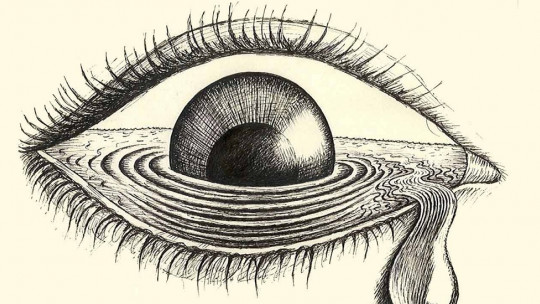It is estimated that every year more than 1,000,000 people commit suicide in the world, which means 1 suicide in the world every 40 seconds and, for every completed suicide, there are another 20 people attempting suicide. Thus, we are facing a problem that requires more prevention, care and urgent intervention measures to be adopted.
Suicidal behavior in people with autism is an issue that requires special attention since, although large-scale studies have not yet been carried out, there is research that should be taken into account that suggests that some factors such as lack of social integration, unemployment and other associated psychiatric disorders could link the autism and suicidal behavior.
In this article we will explain in greater detail the most relevant factors associated with suicidal behavior in people with autism, highlighting the importance of continuing research in this regard in order to prevent more cases and provide greater support to those people who they are suffering.
Suicidal behavior in people with autism
Autism spectrum disorders (ASD) have a neurobiological origin and affect the functioning and configuration of the nervous system which causes a series of difficulties fundamentally in two areas: communication and social interaction, on the one hand, and flexibility of thought and behavior, on the other.
Therefore, a multidisciplinary and comprehensive approach is necessary that is aimed at facilitating a series of specialized, individualized supports that are based on evidence, thus being the most appropriate to help improve the quality of life of each person who has been diagnosed with ASD. It should be noted that within all the help that must be provided, special attention must be devoted to addressing and preventing suicidal behavior in people with autism.
There is a notable percentage of people with autism who have at some time thought about suicide and, nevertheless, In many cases it is quite complex to detect signs associated with the suffering they are suffering. That is why some researchers have begun to study the risks and possible solutions to suicide.
What do we know about suicide in cases of autism?
A team led by expert Sarah Cassidy, from the University of Nottingham, were the first to investigate, through a large-scale clinical study, about suicidal thoughts and behavior in people with autism in adulthood when they had received a late diagnosis of Asperger syndrome. These scientists observed that suicidal behavior is a very worrying reality in people with autism, so more research is needed in this regard that can help prevent and intervene in this type of case.
These researchers also highlighted that two out of three people diagnosed with ASD may have contemplated suicide at some point in their lives because they had spent a large part of their childhood and youth without having received the necessary support or even without understanding their condition.
Another important measure to prevent suicidal behavior in people with autism is based on early detection and early diagnosis of ASD as well as providing sufficient attention to balance and mental health from childhood, prevention and intervention against bullying, and providing greater help if warning signs are detected.
Risk factors associated with suicidal ideation and behavior in people with autism
Some of the factors associated with suicidal ideation and behavior in people with autism include: insufficient and unmet needs for support and help unwanted loneliness, self-harm, ruminative thoughts, emotional dysregulation, isolation, psychiatric illnesses, low self-esteem and also the degree to which they could camouflage their condition.
Other risk factors for suicidal behavior in people with autism would be the following: social ostracism, bullying at school and/or at work and victimization, difficulties in finding employment, having experienced some adverse and even traumatic experiences in life. childhood, marginalization, or alienating experiences with some professionals with whom they had to deal and with those systems that were theoretically designed to provide support to people with autism, among other factors.
Research on risk factors associated with suicidal behavior and ASD
Experts in the field have tried to link previous knowledge about suicidal behavior in people with autism to existing models of suicide in the general population, in order to seek a deeper understanding and thus can serve as predictive utility. . Among all those models, Special emphasis has been placed on the “Interpersonal Theory of Suicide” (TIS).
In the Interpersonal Theory of Suicide, an attempt has been made to distinguish suicidal ideation from suicide attempts, considering them as different phenomena. When analyzing and researching suicidal ideation, the TIS has highlighted the great relevance of what has been called “frustrated belonging”, which is considered a state of social disconnection in conjunction with the belief of being a burden. for their families, being a possible risk factor for suicide.
On the other hand, according to this theory of suicide, for suicidal ideation to escalate until it becomes a suicide attempt, a person should have been exposed to a series of events that were intensely painful on a physical and/or emotional level , which would include self-harm that could cause habituation to pain and would also reduce the fear of pain and even death. Additionally, mental rehearsal, in which the person imagines how to commit suicide, could also contribute to a higher risk for suicidal behavior.

It should be noted that in a study carried out in 2022 by Monseley and his collaborators on some risk factors associated with suicidal behavior in people with autism, they were able to observe a lower rate of suicide attempts and deaths due to suicide in those people. with autism who had some type of relationship (married or had a partner) who in those people with autism who were single. This shows that satisfying relationships with other people who can serve as support and are also a source of social connection are a protective factor against suicide.
Furthermore, having a healthy and stable relationship with another person has been associated with having higher levels of self-esteem, and there may be less probability of suffering from some negative states characterized by the feeling of being a burden and/or by frustrated belonging; It may therefore be a protective factor against suicidal behavior in people with autism and also in the general population. However, it should be noted that the observed direct effect of not being in a relationship on suicidal ideation was not significant.
In an article that was published in 2021 by Kolves and his collaborators, it is suggested that there is a higher rate of suicide attempts in those diagnosed at an older age than in those cases in which the diagnosis had occurred at an early age.
However, this hypothesis has not received support from all the studies carried out in this regard, although it is consistent with those investigations in which findings of a higher incidence of psychiatric diseases such as depression or anxiety have been found. anxiety, among others, along with social and behavioral difficulties and a greater history of self-harm in those people with a late diagnosis.
Likewise, other research has suggested that victimization and bullying are quite common in people with a late diagnosis of autism, so they often they perceive themselves as inadequate or poorly integrated socially. Another possible relationship between late diagnosis, poor mental health and a higher risk of suicidal behavior in people with autism could lie in the possibility that these people are more skilled at camouflaging their difficulties. The camouflage of these difficulties has come to be associated with suicidality or the suicidal experience.
Suicide prevention guidelines in people with ASD
Now that we have seen some factors associated with suicidal behavior in people with autism (although more research is still needed) it is also important to know some guidelines for suicide prevention.
Some suicide researchers have made a distinction between measures that serve to reduce the risk of suicide and those that help increase protection against suicide. It is also important to take into account protective factors against suicide related to the social, local, family and, of course, individual situation of each person.
To give some examples, the fact that there is access to healthcare and a good mental health support network is a good protective factor against suicide; while the implementation of bullying prevention measures are also protective factors against suicide. Another protective factor against suicide would be having a strong social network that serves as support in those most difficult moments in a person’s life.
Next we will comment some of the prevention measures that have the greatest demonstrated effectiveness in preventing suicide in the general population and that could also be used to combat suicidal behavior in people with autism.
1. Restrict access to means or instruments that can be used for suicide
First of all, it is important that a restriction be made on any type of means that could be used to carry out suicide within the home or any place. where a person who is attempting or who has shown warning signs is usually present. Ultimately, many people who have developed ASD will only autonomously explore the context of their home.
These means or instruments that must be restricted include weapons, pesticides or any other type of poison, firearms or some medications that could be used to induce suicide by overdose.
2. Educational and training plans through institutions and media
Awareness plans about suicide and its risks through educational and training plans through associations, institutions or centers specialized in suicide, as well as through campaigns and notices through the different media with the aim to inform as many people as possible about such an important and worrying issue that requires more professional help and that, under no circumstances, should be treated as a taboo subject.
It is important that the population is talked about and made aware of suicide to be able to provide more help to people with suicide attempts. When it comes to raising awareness about suicide, it is important to highlight a few things: try to seek professional help or from an association or center specialized in suicide as soon as possible and keep in mind that the warning signs should never be ignored.
Although it is essential in cases of suicidal ideation and attempts to seek professional help, it is important for that person to have a trusted person nearby (e.g., a family member, partner or a trusted friend) who can provide help. support at all times to help you move forward and reduce the risk of future attempts.
In this case, a professional could teach you a series of skills that could help the person who is at risk (e.g., do not downplay or try to change the subject when someone talks to you about their ideation). suicidal person, the person who has told us about their suicidal ideation must be facilitated to freely express their emotions and listen to them carefully in order to show them that we are there for them when they need us, etc.).
3. Promote the development of skills that can be used for suicide prevention
It’s very important encourage help for the development of social skills and socio-emotional in children, adolescents and even adults, since it is never too late, in order to prevent a greater number of suicide attempts. This should begin with training plans in schools and also through associations, organizations and centers specialized in suicide, as well as within associations dedicated to supporting people with ASD.
4. Early detection of warning signs
Another fundamental measure is, in the context of therapy, early detection, evaluation and appropriate treatment of those who exhibit suicidal behavior as well as monitoring over time in order to avoid possible relapses.
All these measures should be accompanied by social, psychological and, of course, family support, as well as multidisciplinary collaboration of professionals, awareness-raising plans, more funding, large-scale research and more resources that can help with treatment. monitoring and evaluation of this type of situations.
In order for a good prevention plan to be carried out, the collaboration and coordination of various sectors of society is necessary, including the health system, education, aid from the government, law enforcement and support and dissemination through the media.









